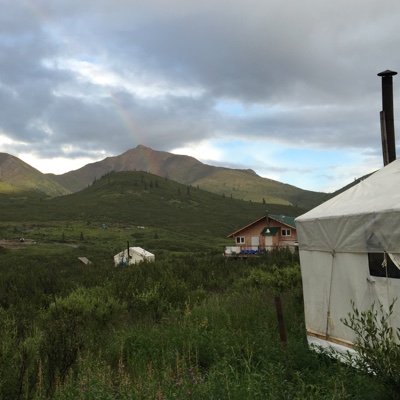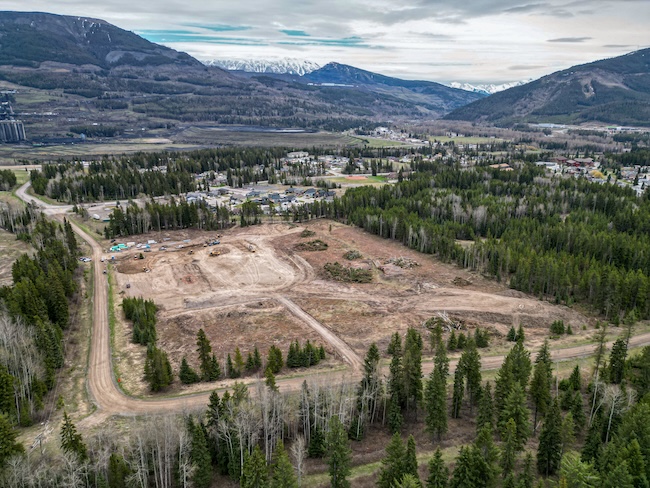Worker fatigue a danger in mineral exploration

Fatigue management is important for all industries. Camps present fewer hazards than drive-in operations because employees tend to get more sleep and
Fatigue management is important for all industries. Camps present fewer hazards than drive-in operations because employees tend to get more sleep and thus are less fatigued. — Photo courtesy Lizzie Flavelle/AME BC
The problem of worker fatigue in the mineral exploration industry is a potentially serious problem, according to the Association for Mineral Exploration British Columbia (AME BC).
Not only do employees perform badly when they’re tired, they are also at risk for a serious workplace incident.
At the same time, it is still unclear just how serious the problem is.
“The mineral exploration industry doesn’t fully understand the role of fatigue in our workplaces yet,” said AME BC director of communications and public affairs Jonathan Buchanan. “We do know that it can be caused not just by too many hours on the job. It also includes fatigue caused by activities off the work site, such as long road commutes to and from the exploration camp or too many late nights.”
The lack of hard numbers notwithstanding, Buchanan said the industry needs to be vigilant.
“A lot of exploration work takes place on remote work sites, far from hospitals and other medical assistance,” he said. “So exploration companies and their field employees need to be extra careful.”
At a recent AME BC event, a guest speaker discussed the ways in which fatigue affects workers’ bodies and how fatigue on the job can be measured with the latest technology.
Sean Kerklaan, CEO of Vancouver-based Fatigue Science, was the keynote speaker at the Environment, Health and Safety Awards Breakfast at AME BC’s Roundup 2016.
Fatigue Science has developed and is marketing a technology platform that measures and records sleep data and turns it into performance data for companies that want to improve employee performance.
The platform has three components: a set of wrist-worn devices called Readibands, which capture sleep data; a mobile hub app for syncing data; and a web-based application for viewing and sharing fatigue results.
“All together, they provide objective, data-driven insights into fatigue,” said Kerklaan. “The Readiband has been scientifically validated and it is 93 per cent accurate compared to in-lab sleep testing, setting it apart from other sleep-tracking wearables.”
The Readiband contains an accelerometer, gyroscope and LED display and is powered by a rechargeable battery.
The software platform behind the ReadiBand is called the Fatigue Avoidance Scheduling Tool (FAST). It was developed by the United States Air Force to address the problem of aircrew fatigue in flight scheduling.
FAST incorporates the U.S. Army's SAFTE model (Sleep, Activity, Fatigue and Task Effectiveness), a bio-mathematical algorithm that can take sleep data and convert it into fatigue and performance data.
FAST identifies schedule designs that contribute to high levels of fatigue. Validated by the U.S. Department of Transportation, FAST allows researchers and planners to identify areas of fatigue risk in schedule and roster design. By analyzing work schedules, commute times and sleep data, it can generate minute-by-minute performance predictions.
Fatigue Science's application-programming interface (API) enables hardware and software developers to tap into the company's fatigue model to develop custom applications that make use of industrial users' sleep data.
Some big names that are using Readiband are Rio Tinto, Queensland Rail and Harvard Medical School.
Kerklaan said Fatigue Science has been working for years with clients in heavy industry and transportation to reduce the risk of fatigue-related accidents.
“In the mining industry alone, between 60 per cent and 65 per cent of truck haulage accidents are directly related to operator fatigue,” he said. “Since a significant portion of the population doesn't get enough sleep, this is a terrifying prospect, and it's not unique to truck drivers.”
The device is also very popular in the world of professional sports.
“We work with such teams as the Vancouver Canucks, Toronto Raptors, Seattle Sounders, Dallas Mavericks, Miami Dolphins, Seattle Mariners and Seattle Seahawks,” said Kerklaan.
The Fatigue Science industrial platform is sold to customers on an annual subscription basis.
“Costs vary based on the needs of our customers,” Kerklaan said.
WorkSafeBC tips for getting a better sleep
Most people need at least 7.5 to 8.5 hours of sleep every night. Studies have found that most night-shift workers get less sleep per week than those who work day shifts.
In addition, the quality of sleep during the day is not the same as during the night.
Here are some WorkSafeBC guidelines for improving quality of sleep:
- Go to bed and get up at the same time every day.
- Turn out the light immediately when going to bed.
- Don’t read or watch television in bed.
- Make your room as dark and quiet as possible. Some people sleep better in a cool
- room.
- Establish regular eating times.
- Avoid caffeine, tobacco and alcohol, especially before bedtime.
Most people need at least 7.5 to 8.5 hours of sleep every night. Studies have found that most night-shift workers get less sleep per week than those who work day shifts.
In addition, the quality of sleep during the day is not the same as during the night.
Here are some WorkSafeBC guidelines for improving quality of sleep:
- Go to bed and get up at the same time every day.
- Turn out the light immediately when going to bed.
- Don’t read or watch television in bed.
- Make your room as dark and quiet as possible. Some people sleep better in a cool
- room.
- Establish regular eating times.
- Avoid caffeine, tobacco and alcohol, especially before bedtime.



